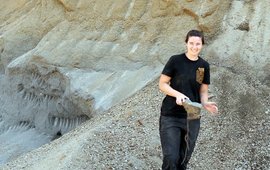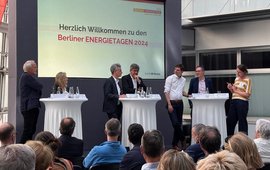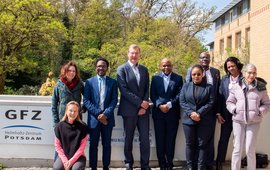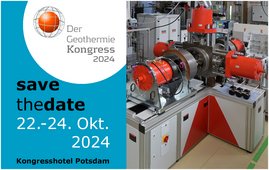We research the utilisation of the upper crust for geothermal energy and storage systems. This includes (i) providing quality-controlled data, innovative methods and the development of technologies to utilise the subsurface as part of a sustainable, environmentally sound energy supply. We focus on investigating new heating or cooling concepts from hydrothermal and petrothermal heat sources and developing options for the geological storage of large quantities (TWh) of surplus heat and energy carriers. The main purpose of our work in the Geoenergy Section is the exploration and development of deep reservoirs for energy utilisation. We combine laboratory studies on rock physics (including geomechanics, hydraulics and thermics) and fluid physics as well as fluid-rock interaction under simulated in-situ conditions with investigations in the field and in underground laboratories and combine the obtained data and findings in geological, geochemical, hydraulic, mechanical, thermal and coupled models. From the measured and modelled data, we derive concepts for the safe and efficient use of geological reservoirs and storage formations.



![[Translate to English:] Drill Core Muschelkalk Potsdam P14](/fileadmin/_processed_/8/a/csm_20230127_230409_PotsdamKern_bd2d8b6cd5.jpeg)
![[Translate to English:] Perforated liner waiting to be installed in the hydraulically stimulated well RV-43 on Iceland.](/fileadmin/_processed_/3/3/csm_01_Delft_DESTRESS_Demonstration_of_cyclic_soft_stimulation_on_Geldinganes2_86a774faae.jpeg)
![[Translate to English:] Exemplary cross-section of a numerical simulation of H2 injection into the subsurface at the Ketzin site](/fileadmin/_processed_/3/9/csm_Bild2_StofflicheSpeicherung_1a02e374b2.png)
![[Translate to English:] [Translate to English:] Dünnschliffaufnahmen zur Untersuchung von Fluid-Gesteinswechselwirkungen während eines Durchströmungsexperiments unter superkritischen Bedingungen.](/fileadmin/_processed_/6/6/csm_fluid-rock-interaction_flow-through-cell_webseite_0c4798e252.jpeg)
![[Translate to English:] Hot spring and samples taken during a fieldtrip in Tanzania, September 2022, in order to characterise the content of critical raw materials in the alkaline geothermal fluids.](/fileadmin/_processed_/6/f/csm_20220901_132955_crop_8af68e1e6f.jpeg)
![[Translate to English:] From geological field surveys to subsurface models](/fileadmin/_processed_/2/7/csm_ExploGeol_Model_website_9df3fde497.jpeg)







![[Translate to English:] Kran](/fileadmin/_processed_/2/c/csm_20240415_142526_Forschungskran_d07b88ccf0.jpeg)

![[Translate to English:] Group photo with 7 people in front of a new metal plant in a large laboratory hall.](/fileadmin/_processed_/0/4/csm_20240628-GFZ_Einweihung_Triax-Anlage-PRESSE_Abb1_040_c-Bahlo-GFZ_f59d517f4f.jpeg)

